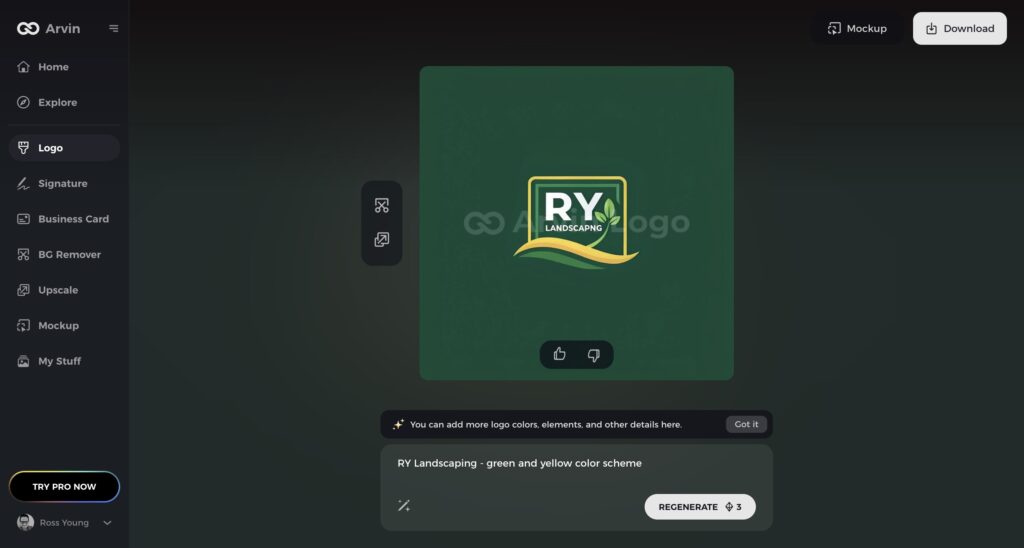
Starting a landscaping business might not be as daunting as you first think. It’s a great industry to get into, with so many different things you can offer to your clients.
But if you’ve never started a business before, you’re probably unaware of the steps you need to take. I launched my own business in 2017 and have a close friend who runs a very successful landscaping business in the UK.
Therefore, I have the required experience to write this article. I draw on my own experiences of company registration and provide unique insight into how to get your landscaping business up and running without delay.
Starting a landscaping business in 6 steps
I’ve identified six key steps that you need to take to start a landscaping business this year:
Step 1: Plan your business and finances
Any enterprise must start with a business plan. So, the first step you must take before launching your landscaping business is to formulate a plan.
HubSpot offers a brilliant free business plan template, which takes much of the guesswork out of what you should include in your plan. It’s also concise and to the point, so you don’t need to worry about adding too much information at the start of your journey.
If you’re struggling with conceptualizing your business and find the idea of writing a cohesive plan daunting, I recommend answering these simple questions to get started:
- What is the primary service (or services) your landscape business offers? (mowing, hedge cutting, design services, etc.)
- How will you pay for the equipment and marketing budget needed to get your business off the ground? (savings, bank loan, salary, etc.)
- Who is your proposed client base, how will you reach them, and how will you successfully onboard clients? (What area do your clients live in? How will you market your services to them?)
- How much will you charge for your services, and will this be enough to cover your core expenses? (conduct market research to decide on your pricing)
I used to run my own coffee business, and I remember staring at a business plan template for hours, trying to input the necessary information. Sure, having a template is helpful, but if you answer the four questions above, you’re well on your way to writing a cohesive plan.
Ultimately, your plan should make it clear what you’re planning to do, how you’re going to pay for it, which clients/customers you want to reach, and how much you will charge them. Once you’ve covered these basics, you can refine the details of your offer and progressively add to your business plan.
Step 2: Research how to register a business legally
The legal side of starting a landscaping business depends on where you live. Every country has its own laws and regulations for business registration.
For instance, if you live in the United States, you will need to register your company with the Small Business Administration. It’s beyond the scope of this article to introduce every country’s registration requirements, but there’s a shortcut.
You can ask Arvin AI to advise you on how to register a business in a specific country. Whether you live in the UK, USA, Canada, Australia, or any other country, Arvin will do the research for you and explain, in simple terms, what you need to do to register your landscaping firm.
With this simple information, you can then put together a plan. If you have the budget for it, you may wish to hire a lawyer to register the company for you. But in my experience, hiring a lawyer to register a company in the UK is unnecessary. The process is extremely easy and can be done online, as it can in most countries.
At this stage, you will also need to create a bank account or e-wallet (like PayPal) for your business. Also, consider which insurance you may need to cover yourself should something go wrong.
Also, you will need to have a name and structure before you can register the company and create a bank account. Crucial to this is establishing your landscaping company’s brand, as I explain below.
Step 3: Create your brand
Perhaps the most crucial aspect of starting a landscaping business is launching a strong brand. There are many key aspects to your landscaping brand that you should consider before launching your company. These include:
Your company’s name
The name of your company says so much about your landscaping firm. There are so many ways to create a business name and you will have to think carefully about your choice.
Many business owners use their personal name in their brand, but this isn’t always a good idea. You may also consider adding your geographic location, but this can restrict future growth.
For further insight and inspiration, learn how to come up with a business name by reading our recent blog post on the topic.
A unique logo
Your company’s logo will feature on all your marketing materials, both online and offline. It will also feature on your company’s uniform, invoices, and other stationery. Therefore, it needs to look professional and it should reflect the values and ethos of your landscaping brand.
Historically, you would have to hire an expensive graphic designer to create a professional logo for your business. Today, you can ask Arvin to create a logo for you for free.
Our free logo maker is perfect for small business owners, saving you hassle and expense while trying to get your business off the ground. It’s extremely intuitive and so easy to use, as I show below.

I asked Arvin to create a logo for my landscaping firm (RY Landscaping), using a minimalist green and yellow theme. In less than ten seconds, Arvin’s logo generator came up with the above example, which I’m pretty happy with.
Of course, you can play around with the tool and be more specific when entering your requirements, but you get the idea. It’s so easy to create a professional, unique logo for your landscaping firm without hiring a graphic designer to help you.
Branding guidelines
With your name and logo created, it’s time to create some simple branding guidelines. This should be a simple A4 document that lays out how you will market your brand to your audience. You should include:
- How to use your logo
- Which colors to use in your marketing materials
- The typeface (font and size) you want to use in your communications
- Any images you plan to use in your marketing materials
Don’t spend too much time on your branding guidelines and remember, you can always change them later. It’s just good to get into the habit of using consistent guidelines from the outset so your brand looks professional from the very start.
Step 4: Start your marketing campaign
When you’re just starting a landscaping business, you probably won’t have a huge marketing budget. This is perfectly normal and nothing to worry about. In fact, you shouldn’t spend too much money on marketing from the outset, as you have many other things to pay for.
However, you need to be deliberate with your approach to marketing. You also need to think about how to market your business so you can successfully reach your audience.
Given the nature of landscaping, a door-to-door marketing approach will likely pay dividends. As such, you should create leaflets to drop into local homes in your area to get your business in front of the right audience.
You may wish to supplement this with a social media marketing campaign, which you can launch on Facebook or Instagram. You may also want to launch on LinkedIn.
We recommend posting some basic things about yourself on social media. You can also show examples of your work.
At this stage, you will probably want to create a website for your new business. Again, as with the logo, you don’t need to spend a fortune. Launch a free website and add some basic information about your business. You can improve it gradually and begin linking to it from social media.
Ultimately, your brand is crucial to your company’s success, as we explain in our recent blog post, which you can read here to learn all about successful brand marketing as you get your landscaping business off the ground.
Step 5: Onboard your first clients
It’s now time to onboard your very first client. This is a moment you will remember and cherish for years to come, and it’s a big first step.
Often, the easiest way to onboard an initial client is to ask a friend or family member to hire you. You can then use this client as an example. Create case studies from your work and present them on social media and on your website. This will start a snowball effect and will help you to get more work.
At this stage, you should create client onboarding forms (agreements and contracts), which outline the terms of your service and clearly detail your charges. You should also include details about how you expect to be paid (cash, debit card, cheque, etc.) and the key payment terms.
Include these forms on headed paper and put your company logo at the top so they look professional. Get into the habit of asking all clients to sign these forms before working with your company and document them for future reference.
You will also need to present receipts and create invoices for your work. This is key to the paper trail and will help with things like taxes and reporting further down the line.
Step 6: Review your progress
Congratulations! Your landscaping business is underway, and you have your first clients on board. But don’t rest on your laurels. Winning your first few clients is super exciting, but you need to continue growing.
After three months of your landscaping business, review your progress. Consider how successful you have been in the first three months according to your business plan. Have you met your initial targets? Are you charging the right amount? Do you need to land more clients to cover your costs?
It’s difficult to make a lot of money in your first few months as a new business owner, but you should still review your progress. You might recognize that you need to increase your marketing budget or adjust your pricing structure.
Small adjustments at this early stage can make a big difference and can set you on course for future success. I recommend reviewing your success every quarter and not being afraid to make changes as and when you highlight avenues for improvement.
Starting a landscaping business: 3 expert tips from a landscaper with 7+ years of experience

Now that I’ve presented six steps to starting a landscaping business, I want to give you three tips from someone who has actually been through this process.
My best friend started a landscaping business in 2018. After a few years of ups and downs, he managed to secure a loyal and repeat customer base. He developed his skills, refined his offer, and improved his output. As a result, his landscaping business is thriving today.
I explained to him that I was putting together this article and asked him for his expert insight into what helped his landscaping business flourish. Here are three things he thinks you should know before launching your landscaping business this year:
Expert tip 1: Don’t over-extend yourself out of the gate
My friend reminded me that landscaping is a pretty broad term. Customers might reasonably expect a landscaping business to cover all bases related to gardening and maintenance. For instance, this might include lawn mowing, hedge trimming, garden path paving, compound maintenance, and various other things.
When my friend started his landscaping business, he exclusively mowed lawns. He invested a hundred bucks in what he thought was a decent mower, loaded it in the back of his car, and went door to door to pick up clients. As he was completely new to the industry, marketing his company as a lawn mower business was much easier than describing his business as a landscaping firm.
After all, he only needed one piece of equipment and one skill. After a few months, his clients started asking him to do other bits in their gardens, including hedge trimming and pruning. He decided to add these skills to his repertoire, and after a year, he had branched out to offer two or three different services.
Today, after seven years, he has a team of four working for him, doing everything from tree surgery to driveway paving. But, as he told me last week, if he started out offering all of these services, his business wouldn’t have gotten off the ground.
So, when you’re just starting out, be humble. Offer one or maybe two services that you can do well and grow from there. Don’t over-extend yourself out of the gate, as doing so may cause you to over-promise and under-deliver.
Expert tip 2: Conduct competitor analysis to get your pricing right
When we met for coffee last week, I asked my friend how he worked out the pricing for his business in the early days. He said that he would go to a property, look at the size of the lawn, and work out how long it would take him to mow the grass.
He didn’t want to work for any less than $14 an hour, so if he thought the job would take him three hours, he would calculate $42 “plus a bit extra” and maybe quote the client $50. They might negotiate, and provided he took home $42 for his three hours of work, he’d be happy.
But here’s the thing: he had no idea how much other landscaping businesses in the area charged for their services.
As it turned out, and as my friend later admitted, most established firms charged in the range of $30 to $60 per hour for mowing the lawn. He lives in a fairly affluent area and homeowners with big properties are happy to pay someone else to care for the garden.
While my friend’s cavalier approach to pricing helped him to undercut the competition, it made it difficult for him to raise his prices when he became more established. This presented a challenge as he tried to grow his business and hire others to help him, as he couldn’t afford to do this at the rates he was being paid.
Therefore, my friend’s advice to you is to conduct competitor analysis before marketing your new landscaping business. Visit the websites of between five and ten landscaping companies in your area. If they advertise their price per hour, note it down. If not, pick up the phone and call them to ask.
Once you’ve collected this data, you can work out the median for landscaping prices in your area. My friend’s advice is to set your prices at slightly lower than this average to give yourself a competitive advantage.
Bonus tip – Launch a startup offer for a limited time
You can then market your initial services as a “startup offer,” perhaps giving your first 10 or 20 clients a 10% discount as you build your business. This gives you the scope to increase your prices later without annoying the first people you work with.
Expert tip 3: Invest in the best equipment you can afford
When starting a landscaping business, you probably want to keep your initial costs as low as possible. This is a good business strategy and something that my friend 100% agrees with.
However, one thing he recommends investing in is a quality mower or high-quality equipment to provide all the services you offer.
In his first few weeks as a landscaper, he landed a couple of clients and mowed their lawns with an old machine he bought on Craigslist for $100. It worked fine for a few weeks, but started coughing and spluttering after a while. Turns out the motor was shot, and he needed to replace it, costing him more than what he paid for the mower in the first place.
He’s not saying you need to buy thousands of dollars worth of equipment. However, you should buy the best equipment that you can afford.
So, create a budget, read online reviews, and consider which machines and tools are best suited to your business. Look for tools that have great reviews for longevity and reliability. You should also look to see if you can buy tools from a trade store rather than a public garden center or DIY store.
When you buy directly from a trade store, you can usually save up to 20% on the purchase price. All you need to do is register your company and create an account with the store in question. This will come in handy as you look to buy more equipment as your business grows.
The bottom line: Starting a landscaping business is easier than you might think
While launching any business can be a little scary, starting a landscaping business is easier than you might think. Here’s a recap of the six simple steps you need to follow:
- Plan your business and finances by asking yourself some simple questions. You can also use a free business plan template to guide you.
- Research how to start a business legally in your country, using AI to guide you. Also, learn how to open a bank account and check which insurance you need.
- Create your brand, including a business name and unique logo, and establish some branding guidelines for your marketing campaign.
- Start marketing your business online and offline to reach your client base.
- Onboard your first clients and create the necessary paperwork to cover the terms of your service.
- Regularly review your progress to consider your success and make changes if necessary.
If you follow these steps and take on board the expert advice above, you should have your landscaping business up and running in no time.
Starting a landscaping business FAQ
What is most profitable for a landscaping business?
Just under 50% of business owners report that mowing is the most profitable part of their business, given the short time it takes and the limited overheads involved. Therefore, it makes sense to incorporate mowing as a fundamental part of your landscaping business from the start.
What do most landscapers charge per hour?
While the average cost of landscaping varies significantly from crew to crew, most professionals charge somewhere between $25 and $50 per hour. While you can use this as your basic pricing structure, conduct thorough market research before deciding how much to charge for your services.
Is landscaping a profitable business?
Thanks to the low overheads and the wide availability of work, landscaping can be a profitable business if you have the necessary skills. However, geography is crucial. It’s seasonal work, so make sure you have services you can offer throughout the fall and winter months when mowing and other tasks are not required in most gardens.


